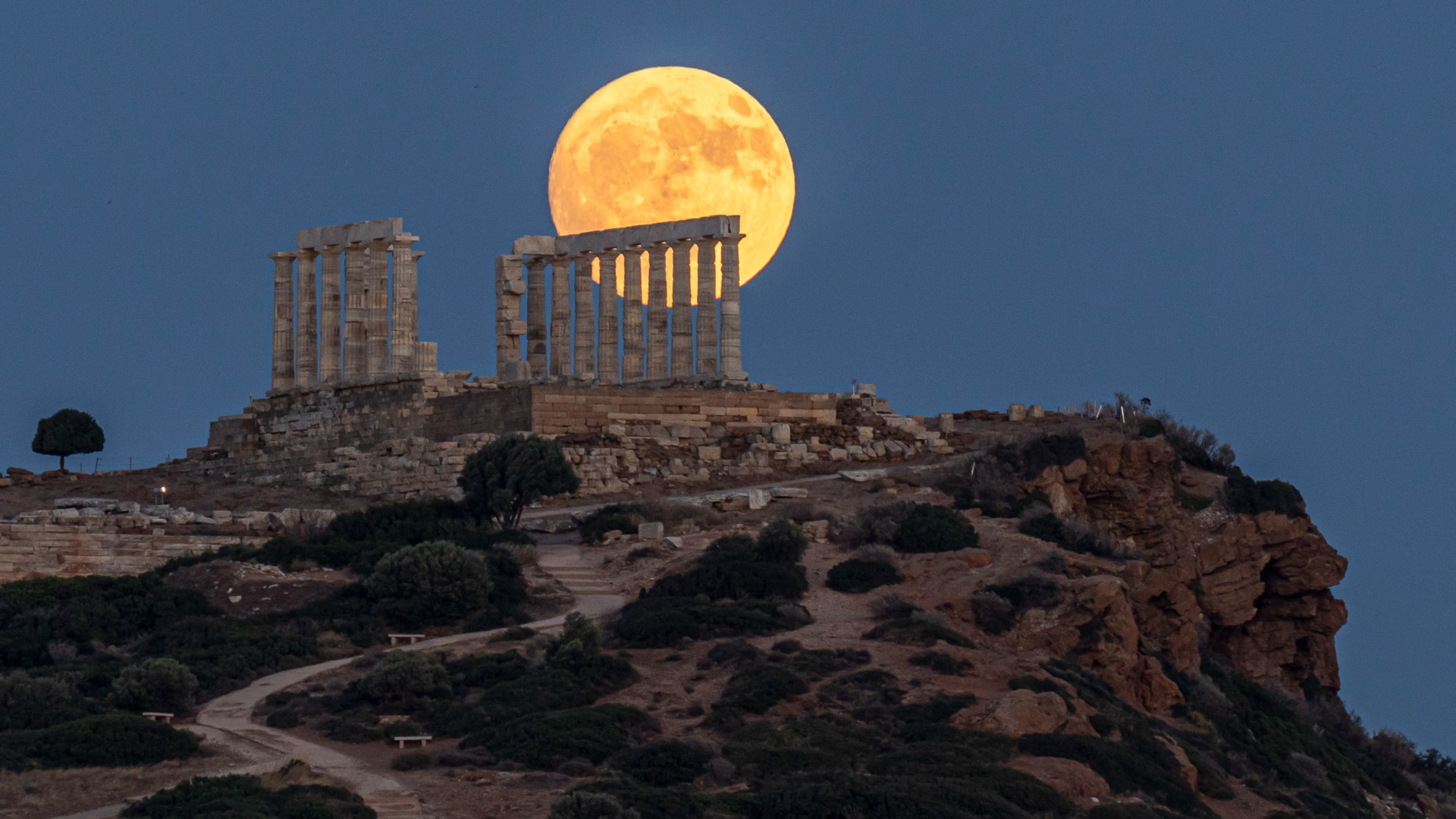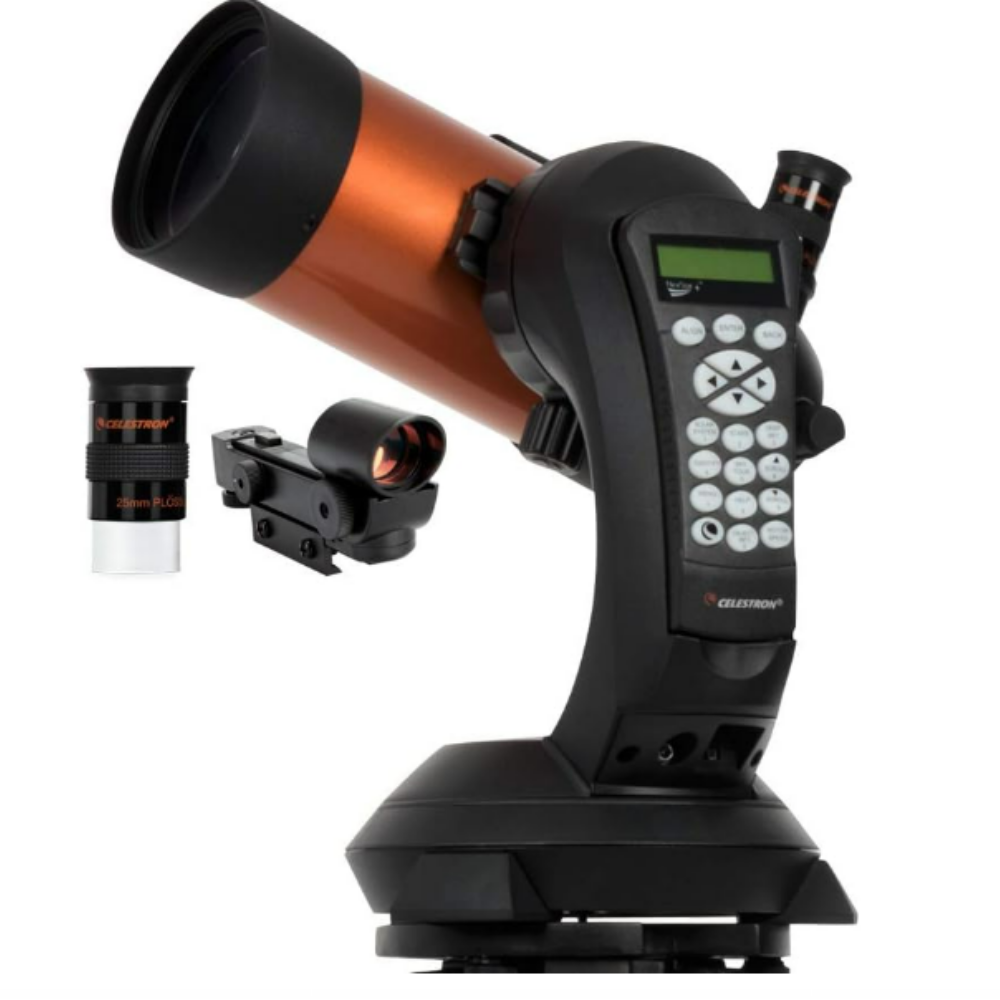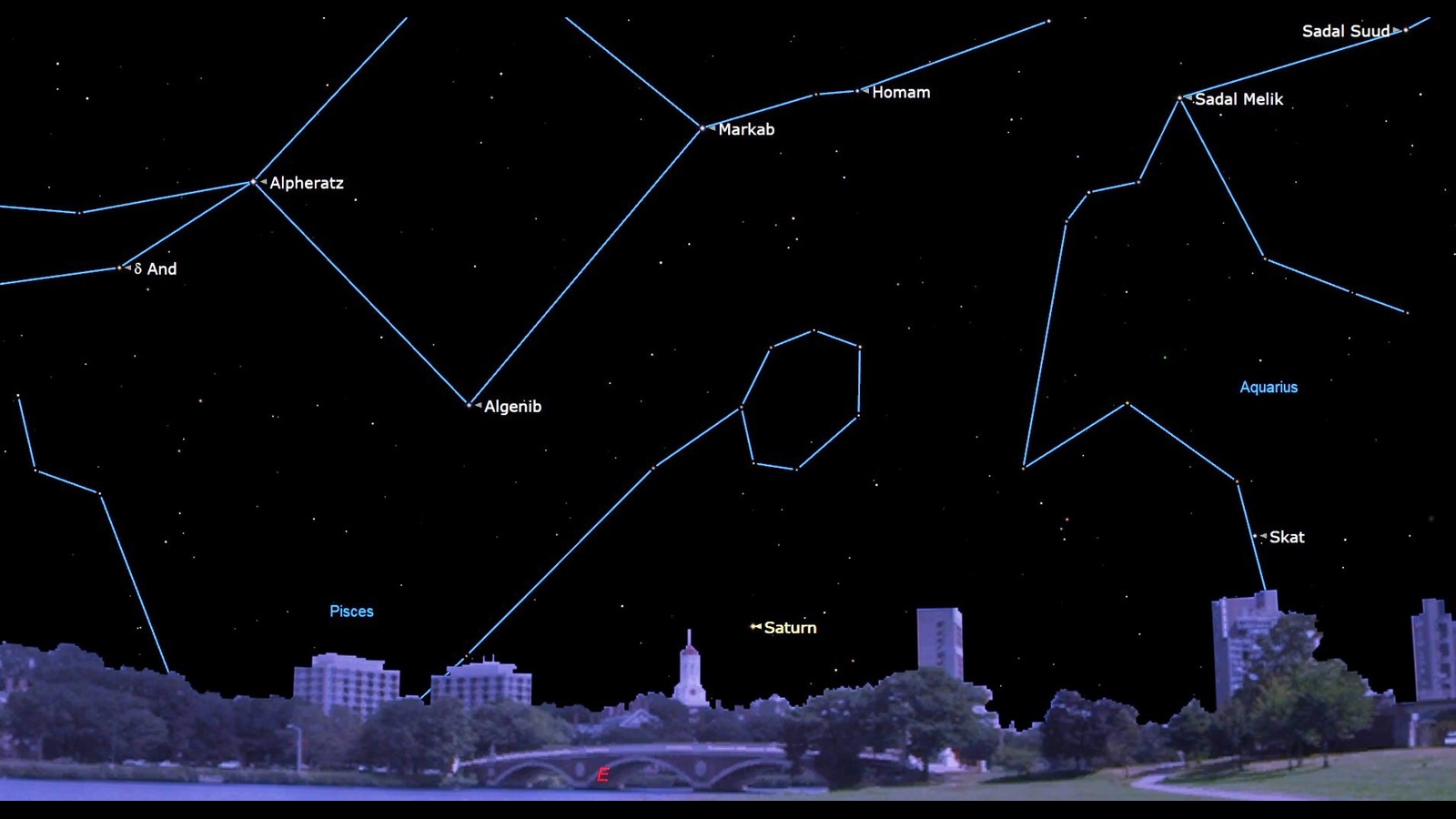July full moon 2025: The Buck Moon joins Mars and Saturn
The Buck Moon rises on July 10.

The full moon of July, also called the Buck Moon, will rise on July 10.
A full moon occurs when the moon is on the opposite side of Earth from the sun; the night side Earth sees a fully-illuminated moon. Generally the moon rises near the time of sunset, and that will vary with latitude and season. The exact moment of full moon occurs at 4:37 p.m. Eastern Daylight Time (2037 UTC) on July 10, according to the U.S. Naval Observatory.
In New York City, moonrise is at 8:54 p.m. EDT on July 10; sunset is at 8:28 p.m. on that day. In the northern mid-latitudes (New York, Chicago, San Francisco, London, Paris or Tokyo) the days are longer, so the moon rises later (and the sun sets later). The time the moon is above the horizon is also shorter, because in the summer months the full moon is in the sun's wintertime position – low in the sky. In New York, moonset is at 5:57 a.m. on July 11 – putting the moon above the horizon nine hours and three minutes.
The situation is reversed in the Southern Hemisphere. In Melbourne, Australia, for example, the full moon occurs at 6:37 a.m. on July 11. July is during the winter months there, so the moon rises early – at 5:26 p.m. on that day. Moonset is at 8:40 a.m. the next morning, which means the moon is visible for 15 hours and 14 minutes.
The varying length of time the moon is above the horizon also affects how high in the sky it gets – in New York, when the moon crosses the meridian at 12:28 a.m. July 11 (and is basically due south) it will reach an altitude of 20 degrees, whereas in Melbourne (and cities of similar latitude such as Cape Town or Santiago, Chile) the moon will reach 79 degrees above the horizon at 12:14 a.m. July 11 – nearly directly overhead.
Visible planets
On the evening of July 10, from the latitudes of New York City, Mars will be moving towards the southwestern horizon. In New York the planet sets at 11:09 p.m.; civil twilight (when the sun is six degrees or less below the horizon) ends at 9:01 p.m., but Mars won't be easily visible until a bit later (how much later depends on the weather; clearer skies offer easier spotting). By 10 p.m. Mars is setting in the west, about 12 degrees high.
The next visible planet is Saturn, which rises at 11:51 p.m. in New York. It reaches the meridian – and its highest altitude – after sunrise at 5:50 a.m. July 11. Saturn is relatively easy to spot because the region of sky it is in has few bright stars; in darker sky locations one can see the "Circlet" – an asterism made up of five fainter stars that is one of the fish in the constellation Pisces, the Fishes.
Breaking space news, the latest updates on rocket launches, skywatching events and more!

Want to see the full moon up close? The Celestron NexStar 4SE is ideal for beginners wanting quality, reliable and quick views of celestial objects. For a more in-depth look at our Celestron NexStar 4SE review.
Venus rises on July 11 at 2:49 a.m. in New York. It doesn't get far above the horizon until about 4 a.m., when it is 12 degrees high in the east. The planet will form a pair with Aldebaran, the brightest star in Taurus, the Bull, and from mid-northern latitudes it will appear to be above the star. Aldebaran is distinctly orange-red, so distinguishing the two is relatively easy to do.
Jupiter follows at 4:39 a.m. Eastern but from the Northern Hemisphere it is lost in the glare of the sun, which comes up less than an hour later; by sunrise (5:39 a.m) Jupiter is only about 8 degrees high.
Mercury is above the western horizon at sunset, but only barely so at the latitude of New York City.
For those watching the sky from further south, some planets are easier to see. Mercury, which is effectively unobservable from New York, is slightly more visible in Miami, where at sunset is at 8:16 p.m. Eastern; civil twilight ends there at 8:41 p.m. on July 10 and Mercury will be 12 degrees high in the west; Mercury sets there at 9:39 p.m. If one has a clear horizon and the weather is clear one can just catch it.
In Honolulu, Mercury sets earlier, at 8:44 p.m., but sunset is also earlier, at 7:17 p.m., and civil twilight ends at 7:48 p.m. By 8 p.m. Mercury is 8 degrees high in the west and can be faintly seen against the darkening sky.
Once one gets to the equator prospects improve even more; in Singapore, Mercury sets at 8:53 p.m. July 11, and sunset is at 7:15 p.m. By 8 p.m. the innermost planet is still 12 degrees high in the west and should be distinct as the stars and constellations around it (the planet is in Cancer) are relatively faint.
From further south, as in Melbourne, Australia, Mercury is slightly closer to the horizon but still easier to see than in the Northern Hemisphere. At sunset (5:17 p.m. on July 11) Mercury is 20 degrees high in the west; by about 6 p.m. it is about 13 degrees high and will be just visible against the twilight sky. The planet sets in Melbourne at 7:20 p.m.

With the longer nights Mars and Saturn are both higher in the sky than in New York, and thus visible longer. From Melbourne, Mars is still 37 degrees high at 6 p.m., and does not set until 9:45 p.m., keeping it above the horizon for a full four and a half hours, as opposed to two and a half hours in New York.
Saturn rises in Melbourne at 11:05 p.m. July 11, and crosses the meridian at 5:11 a.m. at an altitude of 53 degrees; more than halfway up to the zenith from the horizon at due north. In the Southern Hemisphere the planet is above the Circlet in Pisces, and by 7:00 a.m. as sunrise approaches (it is at 7:34 a.m. July 12) Saturn is still at 45 degrees.
Venus rises at 4:26 a.m. July 12 in Melbourne, and by sunrise is 27 degrees above the northeastern horizon. As in the Northern Hemisphere it forms a pair with Aldebaran, though it will appear to be below and to the left of the star as opposed to above it due to the "flipped" orientation of the sky.
Jupiter, as for Northern Hemisphere observers, will be lost in the solar glare; it will emerge in the coming months.
Constellations
By 10 p.m. in the mid-northern latitudes, one will see summer constellations near the moon; the moon itself is in Sagittarius, and bright enough that the stars of said constellation may be hard to spot, but look to the right of the moon and one might be able to see the "teapot" shape that marks the constellation. From the continental U.S. or Europe at 10 p.m. the moon won't be more than seven to 10 degrees high, so Sagittarius will be similarly low in the sky.
Turning further to the right (southwards) one encounters Scorpius, the Scorpion, recognizable by the bright reddish star Antares. At 10 p.m. Antares is almost due south; from New York its altitude is about 22 degrees. On the right side of Antares one can see the three fainter stars in a vertical line that are the claws, looking slightly left and down one can follow a curving line of stars to the tail.
Looking to the east, above and to the left of the moon, is the Summer Triangle, an asterism consisting of Vega, or Alpha Lyrae, Deneb (Alpha Cygni) and Altair (Alpha Aquilae). Vega is the highest of the three; at about 10 p.m. it is 63 degrees high in the east. Go down and to the left and the next bright star one sees – it will be about two thirds as high as Vega – is Deneb, the tail of Cygnus the Swan. Look to the right (imagine a right triangle with Deneb at the 90 degree corner) and one will see Altair, which will be about a third of the way up to the zenith from the horizon.
Turn left of Deneb and you are facing north; Deneb is almost exactly northeast. The Big Dipper will be on the left side of the sky – the end of the handle will be pointing upwards, with the bowl downwards from there. One can use the "pointers" of the Dipper's bowl to find Polaris, the Pole star, and if one continues towards the right and downward one touches the "W" shape of Cassiopeia, the Queen, which will be close to the horizon on the right side of Polaris.

One can use the handle of the Big Dipper to "Arc to Arcturus", the brightest star in Boōtes, the Herdsman, which will be some 54 degrees high in the southwest. Arcturus is recognizable because it looks slightly reddish or orange. Look left of Arcturus (eastwards) and one can see a bright circlet of stars, this is Corona Borealis, the Northern Crown. Keep going left – towards Vega – and one encounters a group of four medium-bright stars in a square, which is the "keystone" – the center of the constellation Hercules. Continuing the "arc" from Arcturus ends at Spica, the alpha star of Virgo, which is nearly setting at this point in the year.
In the mid-southern latitudes, the sky will be dark by 7 p.m. and one will see the moon in the east, with Antares above it and slightly to the left. Sagittarius will be above the moon, and Scorpius above that; Antares is some 53 degrees high in the east from the latitudes of Melbourne or Santiago, Chile.
Looking to the southwest, one can see Canopus, the brightest star in Carina, the Keel of the Ship about 15 degrees high.
Turning almost due south (left) and two thirds of the way to the zenith one can spot the Southern Cross, which points to the southern celestial pole (though there is no equivalent of Polaris to mark it). To the left of the Cross are Hadar and Rigil Kentaurus, or Alpha Centauri; Hadar is closer to the Cross while Alpha Centauri is level with it and further to the left.
Full Moon lore
In the Old Farmer's Almanac, the full moon of July is also referred to as the Thunder Moon, reflecting the fact that in much of North America thunderstorms are more common in the hotter months. While the full moon names are sometimes adapted from local Native peoples that the settlers encountered, many Native nations don't use the same terms at all — the Ojibwe people, would call it the Raspberry Moon. The Woodland Cree call the July lunation the Feather Molting Moon.
In the Chinese lunar calendar the July full moon is in the sixth month, called Lotus Month or Héyuè. The Chinese lunar calendar adds what is known as a leap month every few years to keep the lunar calendar in line with the seasons of the year; this means that the August full moon will also be in the sixth month.
For some Hindus, Buddhists and Jainists, the July full moon is the festival of Guru Purnima, in the lunar month of Ashadha, which celebrates spiritual teachers (called gurus); it is also a time for academics and scholars to pay respects to their own mentors and teachers. For some Buddhists, it is a day to honor the Buddha, who gave his last sermon on this day. Jainists see this day as starting a four-month period of special devotion to teachers and gurus, and in Nepal the day is used to honor teachers.
In Laos, the full moon will start the Boun Khao Phansa Festival, which is the beginning of a three-month period of devotion for monks (which also corresponds with the rainy season). Many people will leave small necessities at Buddhist temples for the monks; it is also a period when many novice monks are initiated.
Editor's Note: If you capture an amazing full moon or night sky photo and want to share it with Space.com for a story or gallery, please send images and comments to spacephotos@space.com.

Jesse Emspak is a freelance journalist who has contributed to several publications, including Space.com, Scientific American, New Scientist, Smithsonian.com and Undark. He focuses on physics and cool technologies but has been known to write about the odder stories of human health and science as it relates to culture. Jesse has a Master of Arts from the University of California, Berkeley School of Journalism, and a Bachelor of Arts from the University of Rochester. Jesse spent years covering finance and cut his teeth at local newspapers, working local politics and police beats. Jesse likes to stay active and holds a fourth degree black belt in Karate, which just means he now knows how much he has to learn and the importance of good teaching.
You must confirm your public display name before commenting
Please logout and then login again, you will then be prompted to enter your display name.
